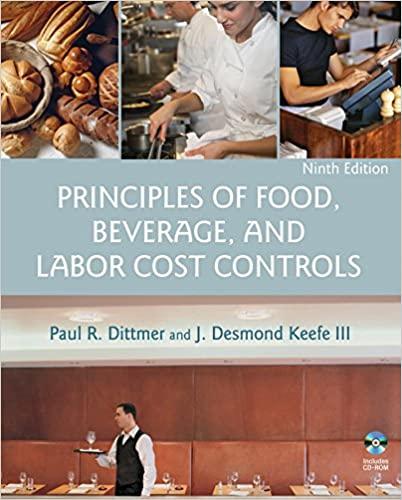Question
Capital Rationing Decision for a Service Company Involving Four Proposals Renaissance Capital Group is considering allocating a limited amount of capital investment funds among four
-
Capital Rationing Decision for a Service Company Involving Four Proposals
Renaissance Capital Group is considering allocating a limited amount of capital investment funds among four proposals. The amount of proposed investment, estimated operating income, and net cash flow for each proposal are as follows:
Investment Year Operating Income Net Cash Flow Proposal A: $680,000 1 $ 64,000 $ 200,000 2 64,000 200,000 3 64,000 200,000 4 24,000 160,000 5 24,000 160,000 $240,000 $ 920,000 Proposal B: $320,000 1 $ 26,000 $ 90,000 2 26,000 90,000 3 6,000 70,000 4 6,000 70,000 5 (44,000) 20,000 $ 20,000 $340,000 Proposal C: $108,000 1 $ 33,400 $ 55,000 2 31,400 53,000 3 28,400 50,000 4 25,400 47,000 5 23,400 45,000 $142,000 $ 250,000 Proposal D: $400,000 1 $100,000 $ 180,000 2 100,000 180,000 3 80,000 160,000 4 20,000 100,000 5 0 80,000 $300,000 $700,000 The company's capital rationing policy requires a maximum The expected period of time that will elapse between the date of a capital expenditure and the complete recovery in cash (or equivalent) of the amount invested.cash payback period of three years. In addition, a minimum A method of evaluating capital investment proposals that focuses on the expected profitability of the investment.average rate of return of 12% is required on all projects. If the preceding standards are met, the A method of analysis of proposed capital investments that focuses on the present value of the cash flows expected from the investments.net present value method and An index computed by dividing the total present value of the net cash flow to be received from a proposed capital investment by the amount to be invested.present value indexes are used to rank the remaining proposals.
Present Value of $1 at Compound Interest Year 6% 10% 12% 15% 20% 1 0.943 0.909 0.893 0.870 0.833 2 0.890 0.826 0.797 0.756 0.694 3 0.840 0.751 0.712 0.658 0.579 4 0.792 0.683 0.636 0.572 0.482 5 0.747 0.621 0.567 0.497 0.402 6 0.705 0.564 0.507 0.432 0.335 7 0.665 0.513 0.452 0.376 0.279 8 0.627 0.467 0.404 0.327 0.233 9 0.592 0.424 0.361 0.284 0.194 10 0.558 0.386 0.322 0.247 0.162 Required:



Step by Step Solution
There are 3 Steps involved in it
Step: 1

Get Instant Access to Expert-Tailored Solutions
See step-by-step solutions with expert insights and AI powered tools for academic success
Step: 2

Step: 3

Ace Your Homework with AI
Get the answers you need in no time with our AI-driven, step-by-step assistance
Get Started


